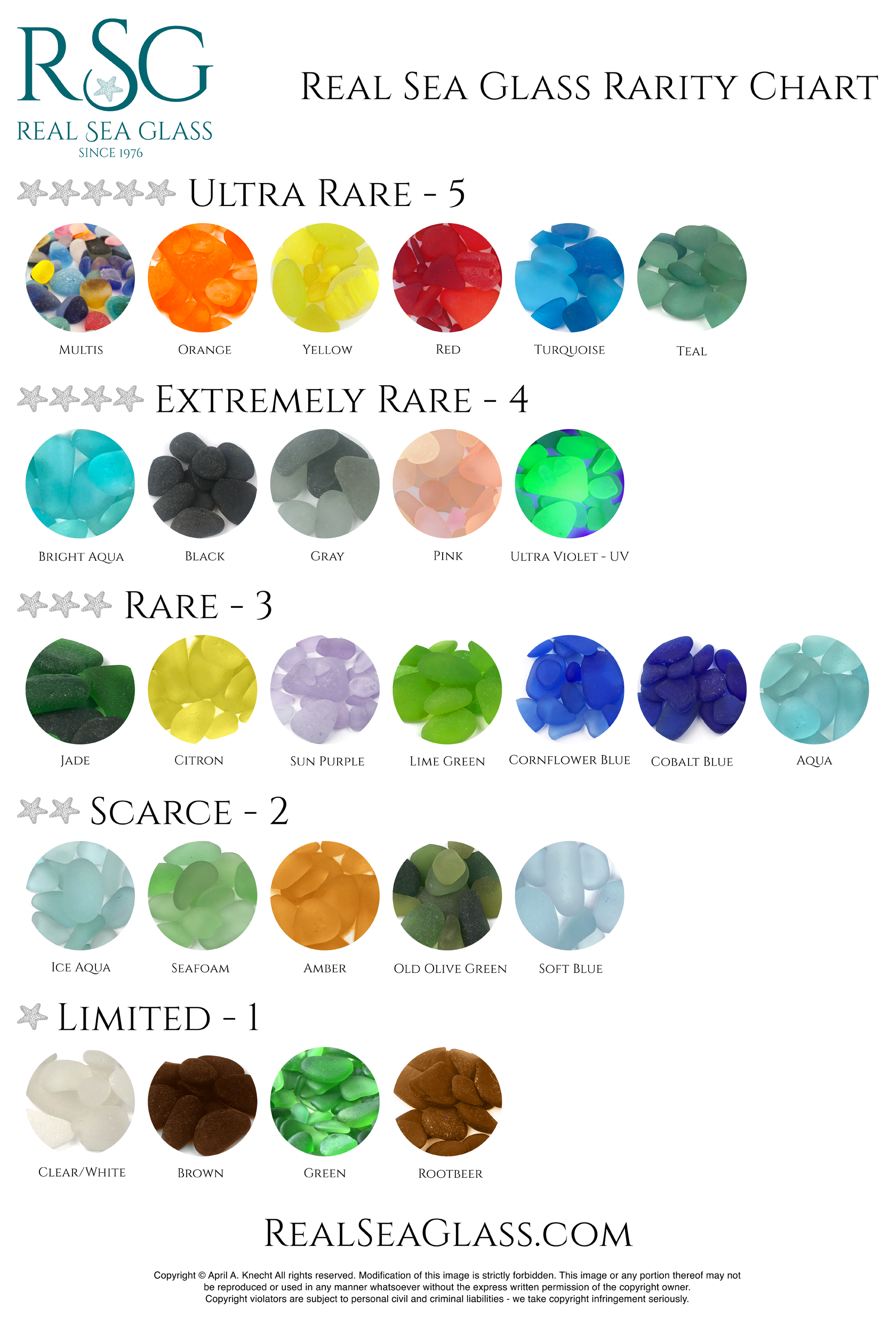All About Grading Sea Glass Rarity & Quality
Ah... Sea Glass Rarity and Grading & the Great Debate!
It's funny, but back when sea glass collecting was just getting started, there was pretty much agreement on rarity - red is rare, brown less so. But now, get two sea glass collectors together and let the debate begin!
Everyone still agrees on the rares and less rares, but exact order of rarity really depends on where sea glass is collected, as regional variations are just going to happen.
The Real Sea Glass Rarity Chart
Here at RealSeaGlass.com, I take this approach: I group my sea glass by degree of rarity based on 40+ years of hunting and collecting and the world-wide efforts of my sea glass hunters. So rather than have a fist-to-cuffs about whether turquoise or red is more rare (turquoise... sorry, I couldn't help it!) each group is represented by a degree of rarity, but don't get too caught up in one color being to the left or right in the group - remember... it varies depending on the beach!
And no matter what the color or placement on the Real Sea Glass Rarity Chart, sea glass is a vanishing treasure, making even the least rare colors limited.

The Real Sea Glass Grading Guide
Most sea glass that is found just isn't jewelry quality. Only sea glass that is smooth and frosty is appropriate for jewelry, but the degree of rounding and frostiness determines its grade.
Like us, sea glass has had a life with some storms included! No matter the grade, all of our sea glass is jewelry grade.
- Perfect: Completely smooth and frosty - no shiny spots.
- Very Fine: One or two small nibbles.
- Fine: A few nibbles or areas with a slight sheen (not completely frosted).
- Very Good: Areas that have been chipped and re-frosted.
- Good: Smooth but with chips.
It's always a good idea to study our high-resolution photos to get the perfect picture of your sea glass' grade.




